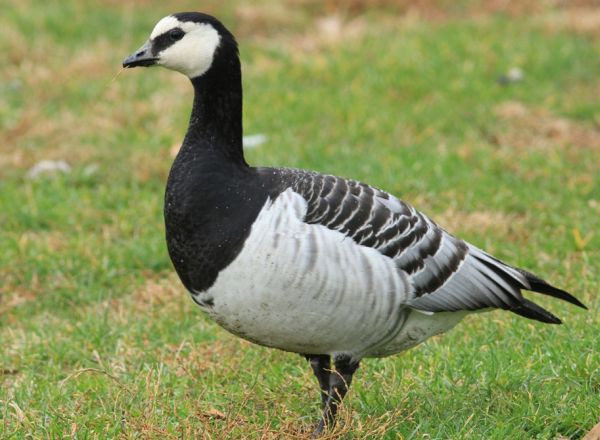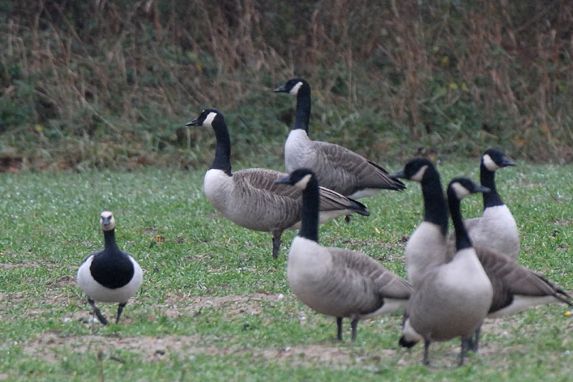Barnacle Goose

D: Weißwangengans
F: Bernache nonnette
Latin name: Branta leucopsis (Bechstein, 1803)
Bird group: Gooses

The barnacle goose (Branta leucopsis) belongs to the genus Branta of black geese, which contains species with largely black plumage, distinguishing them from the grey Anser species. Despite its superficial similarity to the brant goose, genetic analysis has shown it is an eastern derivative of the cackling goose lineage.
The barnacle goose was first classified taxonomically by Johann Matthäus Bechstein in 1803. Branta is a Latinised form of Old Norse Brandgás, “burnt (black) goose” and the specific epithet is from the Ancient Greek leukos “white”, and opsis “faced”.
The barnacle goose and the similar brant goose were previously considered one species, and were formerly believed to spawn from the goose barnacle. This gave rise to the English name of the barnacle goose and the scientific name of the brant. It is sometimes claimed that the word comes from a Celtic word for “limpet”, but the sense-history seems to go in the opposite direction.
The barnacle myth can be dated back to at least the 12th century. Gerald of Wales claimed to have seen these birds hanging down from pieces of timber, William Turner accepted the theory, and John Gerard claimed to have seen the birds emerging from their shells. The legend persisted until the end of the 18th century. In County Kerry, until relatively recently, Catholics abstaining from meat during Lent could still eat this bird because it was considered as fish.
Song/call:

